Free Black and White Viking Helmet Crossed Swords Clip Art
As Samuel Hemming, the first Senior One thousand Warden of the United Grand Lodge of England, in one case put it;
Freemasonry is a system of morality, veiled in apologue and illustrated by symbols.
Today, we're taking a closer look at those masonic symbols (32 to exist verbal) and also requite you an explanation of what they hateful and represent.
NB: This will exist a very long read, but if you're looking for a specific Masonic symbol, you can use the table of content provided down below to find what y'all're looking with a click of a push button.
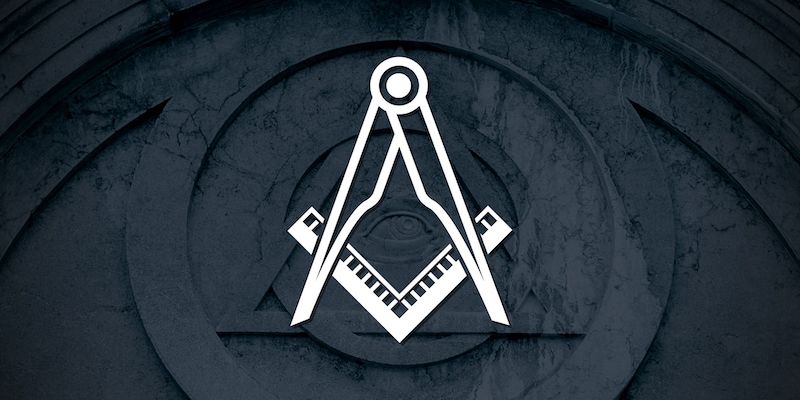
The Great Masonic Library: a collection of 340+ out-of-print Masonic books from 1749 and across digitized & made available for all Brethren in good standing! Click hither to find out more.
Acacia
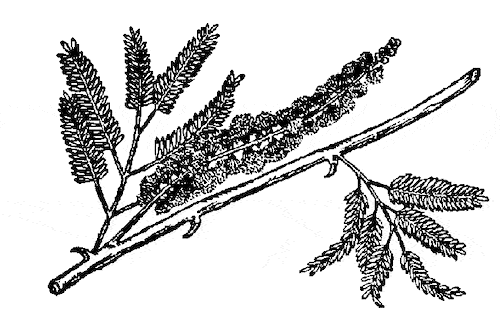
NB: Aspiring Masons and Master Masons from all over the world look forrard to our emails. If you'd like to join them, sign up for Masonic Find's newsletter. Information technology'southward gratis and our next email goes out in a few hours.
In Hebrew scriptures, Acacia is a sacred forest known as 'shittah.' In the Old Testament, it was severely used to make sacred furniture. The Ark of the Covenant and the tabernacle were all made from Acacia.
In Freemasonry, information technology is a symbol of the immortality of the soul.
'This evergreen is an emblem of our faith in the immortality of the soul. Past this, we are reminded that nosotros have an immortal function inside us, which shall survive the grave, and which shall never, never, never die.'
This statement is used during Masonic funeral rites. Its significant is derived from the evergreen and durability nature of the tree. The immortality of the soul is an unprovable fact; therefore, masons are required to take it by faith.
The sprig of Acacia is also a symbol of innocence and purity in Freemasonry. In Greek, the tree signifies the moral quality of the innocence of life. In his theory of Christianizing Masonry, Hutchison explains the estimation equally:
'We masons, describing the sorry estate of religion under the Jewish police force, speak in figures…akakia being the greek discussion for innocence, or being free from sin; implying that the sins and corruption of the erstwhile law, and devotees of the Jewish Altar…'
It is further interpreted as a symbol of initiation. It is incorporated in the craft'south initiation ceremonies to represent the symbol of resurrection to a hereafter life.
All Seeing Center
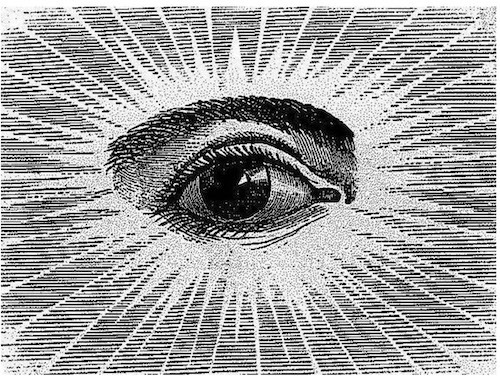
It is likewise known as the Eye of Providence or the Masonic Eye.
In Freemasonry, the Omniscient Middle is a symbol used to remind members that the Keen Builder of the Universe; God is observing all deeds, actions, and human thoughts.
The symbol first appeared as a Masonic icon in 1797 in the publication of Freemason's Monitor or Illustrations of Masonry by Thomas Smith Webb.
Square and Compasses

The Square and Compasses are one of the most recognized Freemasonry symbols. Its origin is traceable back to the heart ages from the stonemasons order.
The square in Masonry symbolizes morality in the essence of the Golden Rule.
To deal with someone squarely refers to treating a person the way we want to be treated. Information technology indicates Masons' ability to apply the teachings of conscience and morality in testing the rightness of their actions.
The compass stands for the ability to marking a articulate boundary around our desires and passion. It represents self-restraint and control, which is the basis of morality and wisdom.
The Foursquare and Compasses combined serve as a reminder to Freemasons to explore personal desires and passions while maintaining morality.
Letter M
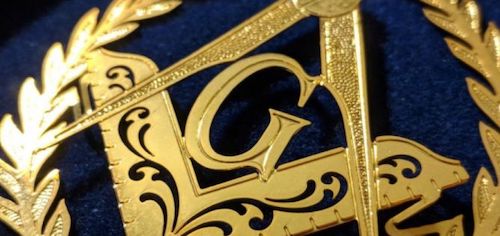
The letter of the alphabet Thousand appears within the Foursquare and Compasses and at the center of the Blazing Masonic star. Its symbolism in Freemasonry often differs from 1 jurisdiction to another.
Some Masons say it refers to 'God'; the Supreme Being. Others clear its meaning to 'Geometry'; the study of the order of numbers in mathematics and sciences in general. Other lodges believe information technology stands for 'Gnosis'; the understanding of spiritual mysteries which is a central part of the craft.
Some Masons link the meaning of the letter of the alphabet G to Hebrew. In ancient Hebrew, the alphabetic character Chiliad had a similar numeric value of iii. In history, number 3 was used severally when referring to God and his teachings.
Cable Tow
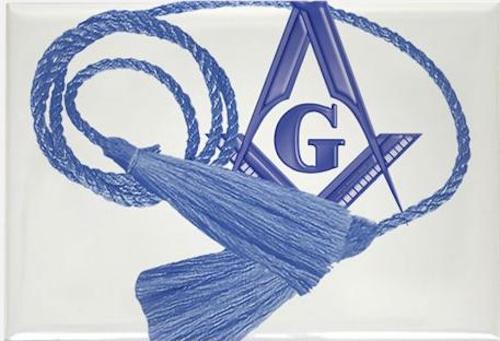
A cable-tow is normally attached to a Stonemason's robe. In the aboriginal days, cable was a potent rope used to necktie together with heavy objects on a raft. A tow was likewise a rope used for pulling objects. A cablevision-tow, therefore, was a robust heavy rope used for binding and pulling objects.
In Freemasonry, the cable-tow is a visible symbol of a person'due south pledge to the arts and crafts.
Information technology represents a vow that a Bricklayer will fulfill his duties and help a fellow brother to his full capability. The length of the cable tow indicates the extent to which a member is willing to become in profitable a boyfriend Mason.
That's why the length of a cable tow is pregnant in Freemason.
The cable-tow tin can be related to the cord that unites a female parent and child during nascency.
After a child is delivered, the physical bond between them is cut and replaced with unconditional beloved.
During initiation, the cablevision-tow is removed from the recruit because the vow taken on the altar is stronger than a visible tie. It becomes a moral constraint bounding a person to brotherly love in the craft. The bond becomes a ii-mode traffic where a person is linked to Freemason, and Freemason is leap to the person.
Masonic Blazing Star
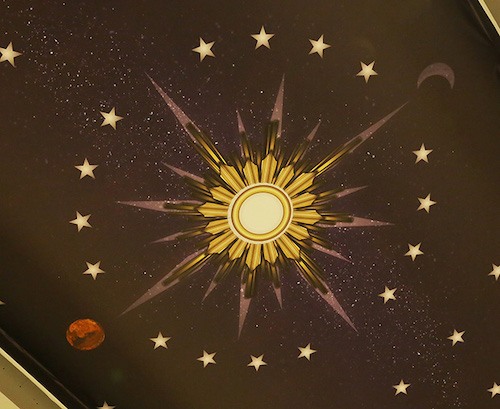
The Masonic Blazing star is said to represent the pinnacle of a person's Masonic Journeying. Its symbolism in the arts and crafts has more than ane significant.
First, the masonic blazing star represents God, the Highest Being who shines his low-cal upon the states, making us better people in the society.
Information technology also reminds Masons of God'due south omnipresence nature, indicating that He is with us regardless of where we are.
2nd, the masonic blazing star represents the sunday, which casts its rays upon the globe giving everything life. Some ancient religions worshipped the sun.
Third, information technology represents the star of Bethlehem, which guided the three wise men to baby Jesus. In a Freemason Lodge, the Masonic Blazing star leads members on a spiritual path to come across the Supreme Existence.
4th, it stands for prudence. The quality of beingness wise. Prudence guides Masons in living a life full of wisdom.
Masonic Gavel
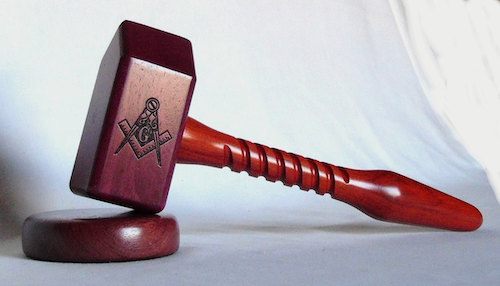
The Masonic gavel has two distinctive meanings. In the Stonemasons era, a gavel was used in shaping stones. Similarly, in Freemasonry, information technology serves as a speculative reminder for members to remain morally pure and separate themselves from societal vices.
Masons are viewed equally living stones that can be shaped by breaking rough edges to live a life pleasing to our creator.
When used by a Master of a Lodge, the Masonic Gavel is a figure of authority. He uses it to manifest his ability in the society through his actions. Through this, he can maintain order in proceedings.
Some lodges also in the U.s. have a travel gavel programme used to promote visitation to other lodges as a unit. It promotes social interactions between lodges.
Masonic Lambskin Apron
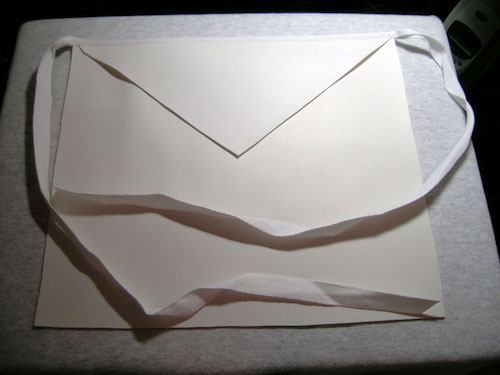
In the Bible, a white lamb was an keepsake of innocence. In most ancient religions, an apron was worn by religious leaders as an honorary badge.
In Freemasonry, a White Masonic Lambskin apron is worn to preclude clothes from staining. Information technology expresses the importance of keeping oneself pure from moral vices. It'due south a reminder of cleansing one'southward body and mind from all impurities.
The Master Stonemason's frock is made from lambskin or pure white leather. Information technology should be worn with dignity to protect a brother'southward virtue and accolade the fraternity.
Anchor and The Ark
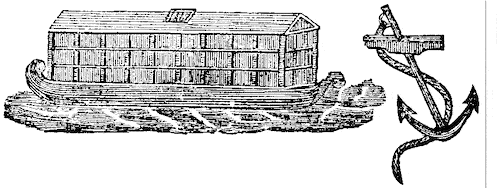
The Anchor and the Ark in Freemasonry are a symbol of hope and peace confronting life challenges. The symbol was discovered in catacombs in Rome. Information technology is believed that the person who lived in the tomb rested in a peaceful identify.
Using an ballast to represent hope is said to originate from Apostle Paul in the book of Hebrews.
Hebrews 6:xix; 'Which promise nosotros have as an ballast of the soul, both sure and steadfast, and entereth into that within the veil.'
At the time, Christians were facing a lot of challenges and prosecution. Those who managed to brand it to the end were grateful. The anchor gave them promise to keep on going despite the challenges faced, that'southward why it was carved in their tombs.
The ark, which was a ship in the bible, represents the journey of life.
According to the Masonic third degree, the two symbols combined offer reassurance to Masons that the Divine Ark will surpass stormy weather condition and bring them to a place of residue complimentary from worldly wickedness.
Ark of Covenant

In the Bible, the Ark of the covenant was synthetic by Moses post-obit control from God. It was made from shittim forest (acacia), had four aureate rings attached to the iv corners, and ii golden cherubim sabbatum on the top.
Information technology housed the 2 stone tablets containing the 10 commandments, a pot of manna, and Aaron's rod.
The Ark was later used as a symbol of God'southward promise to David and housed in Solomon's Temple.
Freemasonry's meaning of the Ark of Covenant is derived from biblical times. It is a universal symbol in the fraternity featured in numerous artworks. The Ark represents God'southward unending forgiveness to homo sins.
Masonic lodges are perceived every bit modern-24-hour interval Solomon Temples. In the lodges, members are taught the importance of abiding by God's commandments.
Therefore the Ark besides reminds Masons that even though they are doing good by the fraternity teachings, heeding to God'southward ten commandments will help them do ameliorate.
Masonic Shoe
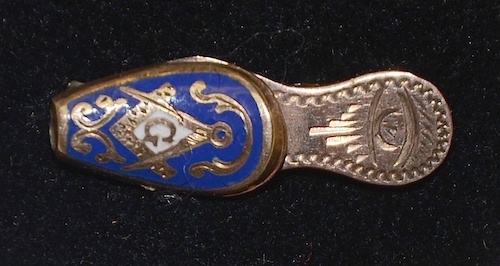
The Masonic shoe is also known as the Blue slipper. The proper noun 'Blue slipper' ascertains the value the color Blue holds in Freemasonry. In the olden days, removing a shoe and handing it to someone else was a fashion of validating a contract.
The Masonic shoe connotes diverse meanings according to different degrees.
In the First Degree, it symbolizes a pledge and accepting to enter into a covenant. In the Tertiary Caste, it connotes the removal of shoes when in a Holy Identify. It is a reflection of different religious practices.
For case, Muslims accept their shoes off before inbound a mosque.
Moses was commanded to take his shoes off when he saw the burning bush. It, therefore, serves as an affirmation that what has been said will be washed without a doubt.
The Beehive
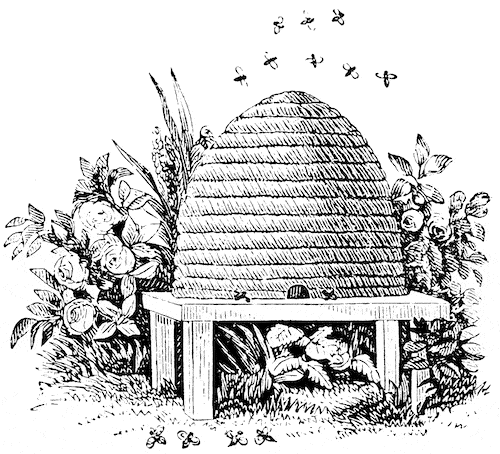
A beehive consists of a group of insects tirelessly working together to achieve a common goal. Similarly, the beehive in Freemasonry represents the importance of Masons meeting and mobilizing all efforts for one purpose.
The concept backside the hive is to get together people with similar interests who can cooperate.
The beehive also symbolizes a form of work known as industry and the craft'southward different piece of work types. In Freemasonry, work is vital.
This virtue is taught by a Master Mason instructions;
'Works that he may receive wages, the better to back up himself and family, and contribute to the relief of a worthy, distressed brother, his widow and orphans.'
Coffins
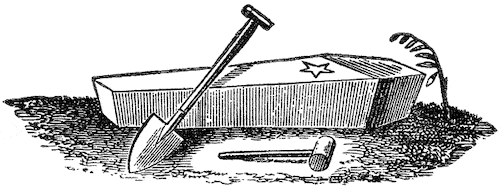
More often than not, coffins are associated with death. In Freemason, a coffin is displayed next to a sprig of acacia, and occasionally, in that location volition be a five-pointed star carved on the top side. The meaning attached to the coffin varies from one context to another.
It symbolizes the death of a Bricklayer's previous life, which is necessary earlier a person starts engaging in Masonic duties.
Masonic Sheaf of Corn
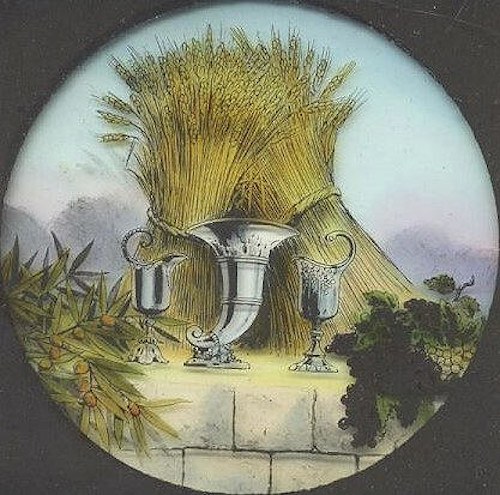
During King's Solomon times, laborers paid their wages (taxes) using corn. Aboriginal Chief Masons received a sheaf of corn, wine, and oil as payment, which is currently paid in dollars.
In Freemasonry, the Sheaf of Corn symbolizes the benefits of our sweat and the rewards earned past those before us and the importance of partaking charitable activities.
The symbol reminds masons of the hard work put in by their former brothers. After a successful harvest, the leftovers in the field were left for widows and orphans.
Similarly to corn leftovers left for the unfortunate, Masons are required to participate in charitable activities that benefit the underprivileged in our society.
47th Trouble of Euclid
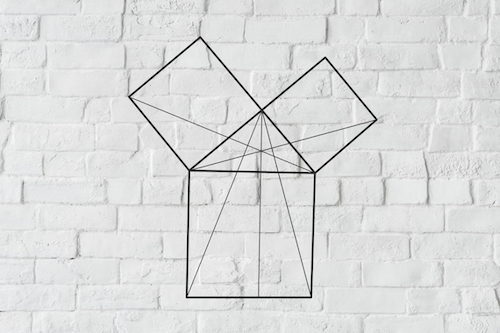
The 47th Problem of Euclid is also known as the 47th Proposition of Euclid or the Pythagorean Theorem. The name originated from Euclid, famously recognized as the father of geometry.
The mathematical representation of the symbol is in the ratio iii:4:5.
In Speculative Freemasonry, the 47th Problem of Euclid stands for Masons' importance to 'square their square.'
In other words, members of the craft are required to align their lives in gild. Operative Freemasons used the symbol to lay out potent foundations in construction.
Masonic Pavement
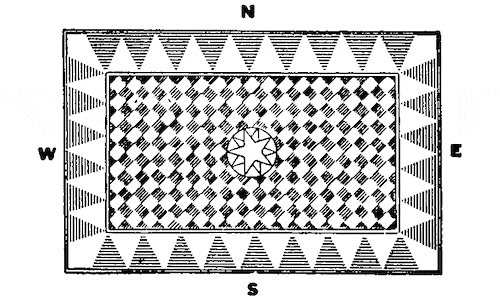
The Masonic pavement is one of the most recognized symbols of the fraternity.
The floor of Masonic lodges is made of mosaic pavements; various stones joined together to form a pattern in the form of painting. Information technology is said that King Solomon'due south temple flooring incorporated blackness and white mosaic pavements.
Mosaic pavements designs in freemasonry can be traced to the 18th century. At the fourth dimension, most guild furniture was made from these. The pavement symbolizes a bail uniting all members.
According to French Masons, the mosaic pavement educates members that they were one time role of a Fraternity that leap people together; hence the pre-existing bonds should be maintained and strengthened.
It is also a symbol of care and providence. Masons are taught that it'southward a pillar of condolement and blessings, which shows members the importance of relying on the Divine Providence of God.
Trestle-Board
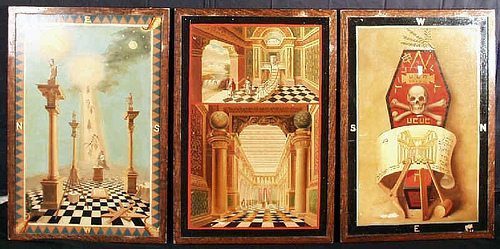
In some masonic jurisdiction, Trestle boards are referred to equally tracing boards. Some Masons, however, reject the notion that the two are similar.
A trestle board is a typical framework made of three vertical, horizontal, and slanted crosspieces. Trestle boards are designed for a principal workman to outline their plans of what is needed to exist washed. Information technology is like to a blueprint.
Operative masons used trestle boards purely to lay down the plans of a building before executing it. When Freemasons evolved from beingness Operative masons, the trestle board remained as a symbol.
Today, it represents an ideal. Information technology refers to the plan a Mason has for his life. As well, it stands for a blueprint to better current weather. For instance, Masons believe that enlightenment can pull people out of the miserable conditions they are facing.
Two-Headed Eagle
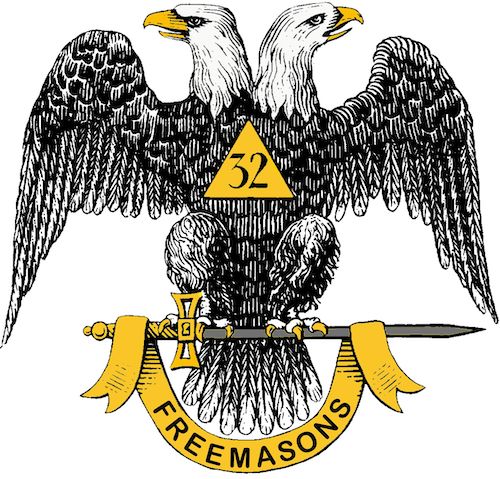
The Two-Headed eagle is theorized to originate from Ancient Mesopotamia. It was a representation of polysepalous (multi-headed) beasts that were spoken of in legends and myths.
Over the years, the symbol was continuously used in flags, engraved in metallic work, garment embroidery, and many other places.
It was first used every bit a Freemasonry symbol in 1759. At the time, it delineated ii bodies merging into one. The Two-headed Masonic eagle is also known every bit the 'Eagle of Lagash.'
The name originated from the oldest symbol in the ancient Sumerian city of Lagash.
In Freemasonry, the double-headed eagle is a symbol of the xxx-third degree of the Scottish Rite.
It is used as a symbol of a completed alchemical process. In alchemy, the eagle represents purified sulfur and portrays a rising spirit. It stands for the reconciliation betwixt matter and spirit.
2 Masonic Pillars
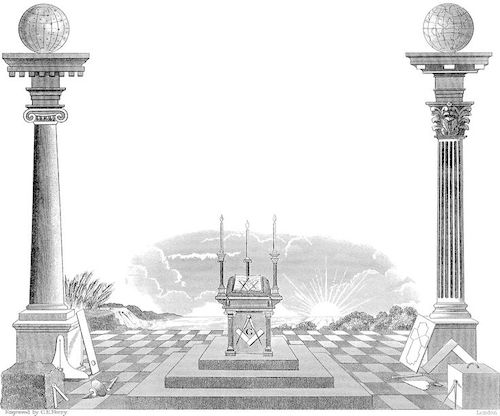
These two pillars are synthetic at the entrance of Masonic lodges. In the Bible, two pillars known as Boaz and Jachin stood at the porch of Solomon's Temple.
Boaz was the left-hand colonnade which meant 'In Him is Force,' and the right-mitt pillar Jakin means ' He Establishes.'
In Freemasonry, the two pillars symbolize opposite pairs. Due west.50 Wilmuhurst described opposites every bit, 'good and evil; light and darkness; active and passive; positive and negative; yep and no; outside and within; homo and woman…'
Masons are taught how to create a residue between his own thoughts and external actions. Blood brother C.W Leadbeater states that;
' In the harmonious working of these two laws, a man may attain stability and forcefulness required to attain the circle within which a Master Stonemason cannot err.'
Information technology also represents life and death, which are full opposites. Masons believe that death is a necessity to extinguish that which is sometime and withering. This creates room for germinating young ideas and principles.
The Moon

During the 18th Century, some lodges met during full moon nights since, at the time, in that location was no street lighting. Members were dependent on the light emitted from full moons to observe their way dorsum home.
Freemasonry highlights the moon as a less powerful source of light. The light from the E side of the moon is devoted to the Master of a Lodge.
The moon's symbolic nature is used every bit a reminder of the rituals, alchemical rebirth, and Newtonian preparation in Freemasonry. Its symbolism, however, leans more towards alchemical rebirth. Alchemy refers to the procedure of purifying substances.
Educating a person every bit they move up from ane degree to another perfects him making him a amend Stonemason.
The Masonic Trowel
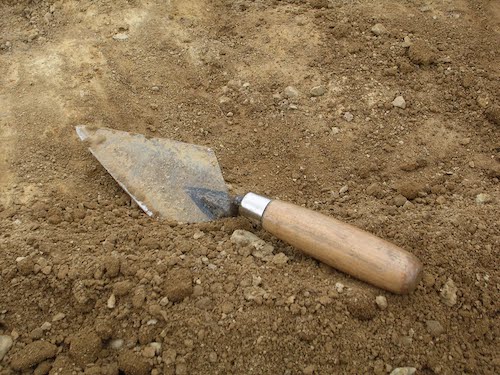
Stonemasons used trowels during construction to spread cement on bricks or stones.
Freemasons use the trowel as a symbol of Primary Workman. Similar to structure, the trowel is symbolically used to spread brotherly dear inside the craft.
The person spreading love is a figurative trowel, while the affection existence spread represents cement.
Masonic brotherly dear refers to resilience a person has built by restricting personal desires and passions to disseminate peace and harmony to the people effectually him. The dearest is not limited to young man Masons.
Instead, it is to be shared with anyone a Mason interacts with.
King Solomon's Temple
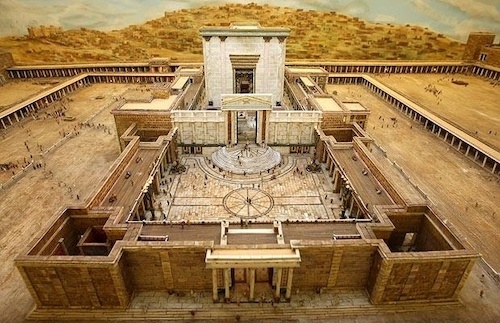
King Solomon's temple is significant in Freemasonry. It is 1 of the most prominent structures constructed in Biblical times.
Freemasonry traces its origin as an institution of the temple. Co-ordinate to aboriginal theories such equally The Legend of the Craft speculate that Solomon initially concocted the fraternity.
It was conceived as a secret lodge during the construction of the temple on Mount Moriah.
Therefore the temple is a symbol of origin to Freemasons. Today, masonic lodges are perceived as modern-day King Solomon Temples.
The two pillars erected in a social club's archway are like to the pillars at the ancient temple. The layout of the lodge represents a stone yard or temple building in different construction stages.
The first three degrees of the craft revolves around the craft. All the same, actual evidence linking the theories to existent occurrences is non-existent.
The Masonic HourGlass
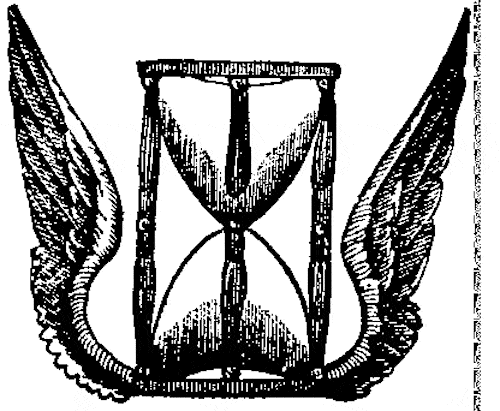
An HourGlass in Freemason holds more 1 meaning. It is used to stand for multiple concepts. Still, it symbolizes two pregnant allusions; time and death.
The hourglass indicates that time is moving forrard, and nothing tin reverse the movement of the sand. Masons are taught that everyone is equal regardless of the position 1 holds in life because riches and high social status cannot move the sand in astern. Therefore, we are all on the same level in life.
The title folio of Nicholas Stone; Mason to King James I and Charles I; has a note saying:
'In time accept time while time doth terminal
For fourth dimension is no fourth dimension, bike time is by.'
The notation emphasizes the importance of utilizing time now before it'southward gone.
The scythe sometimes symbolizes death in the hourglass. Decease cuts short life and leads us to eternity.
It shows that even though we manage to conquer evils from childhood to machismo, eventually time volition take hold of upward, and nosotros will have to get out the globe behind.
Expiry is inevitable to all human beings, whether rich or poor.
The Scythe
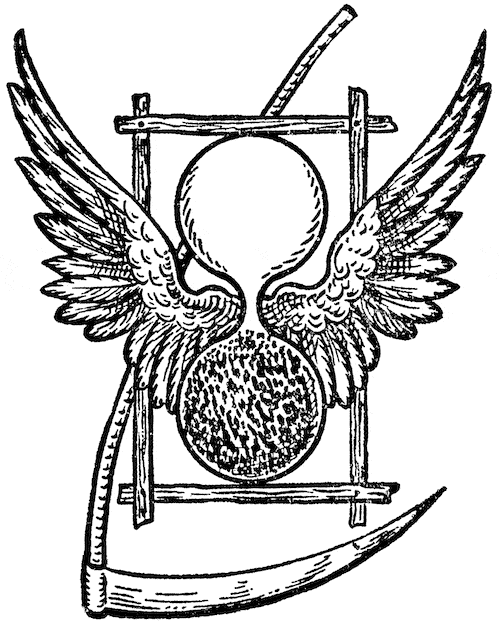
The scythe is sometimes embedded in the hourglass. The hourglass and the scythe are perceived equally a conjoined symbol by some Masons. During the olden days, a scythe was a standard tool used in cut grass and reaping crops.
In Europe and Asia, the scythe is perceived to represent the Angel of Death or Grim Reaper.
In Freemasonry, a scythe is an emblem of fourth dimension in the destruction of humankind's institutions. It symbolizes the end of our time on earth.
Masons are taught that since we don't know the exact time of death, it is essential to utilize the time God has given to mold ourselves into better people.
The scythe also stands for immortality. Freemasons believe in immortality.
Earthly bodies are temporary vessels that volition eventually perish, just our souls will forever alive. Therefore as per the craft'south teachings, death reconnects a person to fellow Freemasons who met death before him.
The Twenty-Four Inch Estimate

Operative masons used the twenty-four-inch gauge to measure their piece of work. Today, the instrument symbolizes the twenty-four hours in a day. The hours are further divided into three equal parts encompassing 8 hours each.
Freemasons are taught to allocate ane third for engaging in work, second third to serving God and people in the social club, and the final tertiary to sleeping and refreshing.
In some lodges, the twenty- four-inch gauge is visibly divided into three unlike segments.
The Level
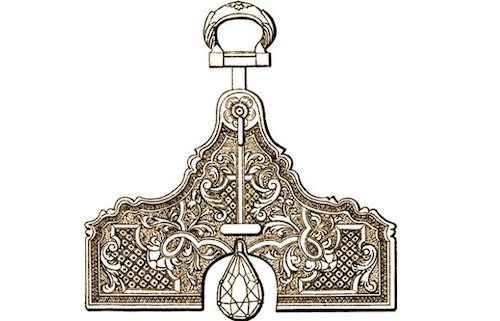
The level is a mutual symbol in Freemasonry. A section of Freemasonry Tracing Board says;
'The Jewels of the order are the three movable and 3 immovable. The three movable jewels are the square, the level and the plumb rule. Amid operative masons…the level is to lay levels and show horizontals…Among Free and Accepted Masons…the level equality.'
The level symbolizes equality. Masons are taught that we all come from the aforementioned place, are working towards similar goals, and share the aforementioned promise.
Also, Freemason recognizes that even though men cannot possess similar abilities and gifts, everyone deserves to be given equal respect and similar opportunities.
The Senior Warden of a Lodge wears the symbol of the level. The tool reminds the Senior Warden of the importance of treating all members equally.
The Masonic Keystone
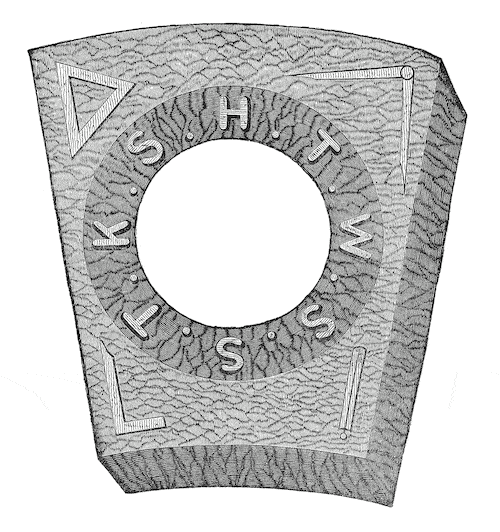
The Masonic Keystone has eight letters engraved; HTWSSTKS, which stands for 'Hiram The Widow'southward Son Sent To King Solomon.' 3rd-degree masons report the legend of a person called Hiram Abiff, also known as the widow's son.
Legends narrate that Hiram was the chief architect in constructing the Temple of Solomon. He was mercilessly killed for failing to surrender the secret Masonic passwords. Bricklayer, therefore, holds him equally a symbol of loyalty.
His story emphasizes the importance of keeping the arts and crafts'south secret dearly.
The letters HTWSSTKS are carved on the grave headstones of Royal Arch masons who surpassed the third-degree level.
Bespeak Inside a Circle
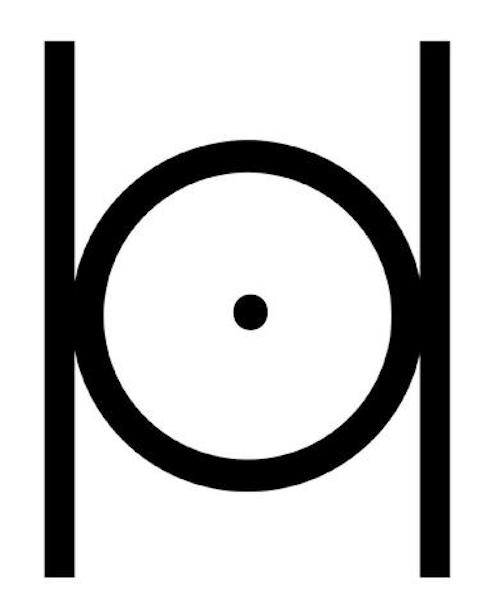
Some delineations of the symbol have letter B on the right side and E on the left. The Point inside a circumvolve in Freemasonry is linked to St. John the Baptist (B) and St. John the Evangelist (E). The two are essential Masonic saints.
In Freemasonry, the Point, black dot in the middle of the circle symbolizes an private mason.
The circumscribed circle stands for the boundary betwixt a blood brother's obligation to God and men. A Mason should be restricted within the circumvolve.
He shouldn't let personal desires, passion, interests, or anything else lead him astray.
The Broken Column
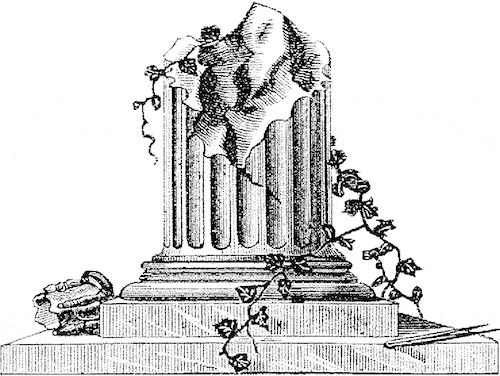
The cleaved cavalcade in Freemasonry represents the demise of Hiram Abif and the incomplete work of the Temple of Solomon. The statue consists of a virgin weeping in front of a broken column.
On ane hand, she is property a sprig of acacia and an urn on the other.
The symbol teaches 3rd-degree masons moral lessons on living virtual and upright lives. It answers inquiries on eternal life and faith. It also serves equally a safety assurance.
The Masonic Pencil
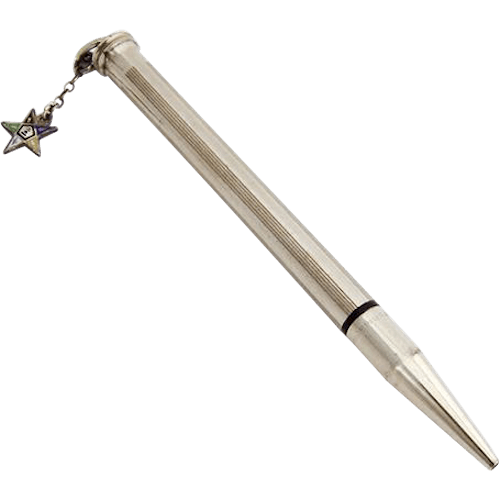
Stonemasons used pencils to sketch and marker layouts during structure. The lead mason envisions the building on a draft, and the design guides worker masons.
Today, speculative masons do non describe a symbolic significant from the tool.
In Freemasonry, God is the artist, and we are the workmen. The pencil serves as a reminder that God notes all actions downward, and on the judgment 24-hour interval, we will be judged according to our doings.
The Number seven
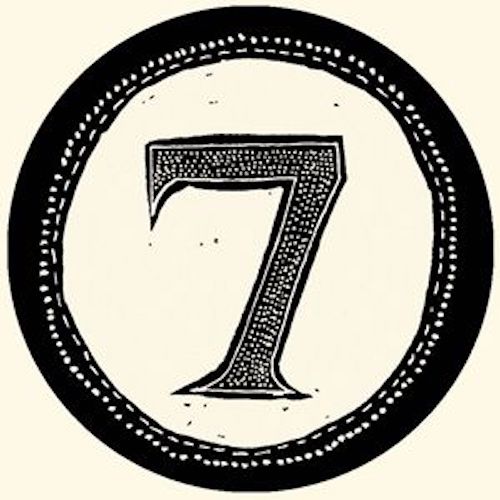
The number seven is sacred in the bible. Historical biblical recurrences are denoted by number 7. For instance, Solomon built the Temple for seven years. In Freemasonry, seven is linked to Pythagoras.
Pythagoreans depicted 7 as a perfect number because information technology is a summation of three and four, which symbolically represents a triangle and a foursquare. It is considered a perfect number that indicates completion.
This explains why vii members are required to make an ideal lodge; three chief officers (Master Masons), two fellows of the craft, and two entered apprentices.
Rough and Perfect Ashlar
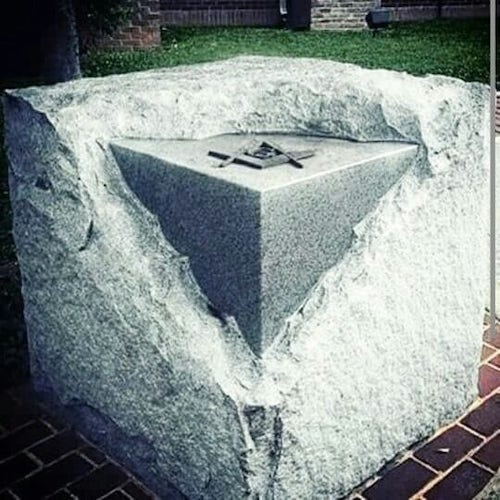
In Freemasonry, there are 2 types of Ashlars; rough and perfect. Each depicts a unlike meaning. Operative Masons referred to rough Ashlar as an unprepared stone. In Speculative Freemasons, rough Ashlar represents a Mason's life before joining the craft.
Information technology describes someone's life before becoming enlightened.
Perfect Ashlar portrayed a complete stone that has been thoroughly molded past working tools; mallet, chisel. Gavel etc. A stone could only be used in structure afterwards information technology's perfectly shaped.
Similarly, perfect ashlars are a symbol of brothers who take undergone all-encompassing masonic teachings and are now focused on leading an upright life.
Masons are taught that no one is born a perfect rock. Through teachings, necessary education, and nurturing of brotherly love, a human can restrict his actions inside the circle.
Related posts:
INTRODUCING: A Make NEW ONLINE Customs FOR Proficient MEN LOOKING TO BECOME Amend
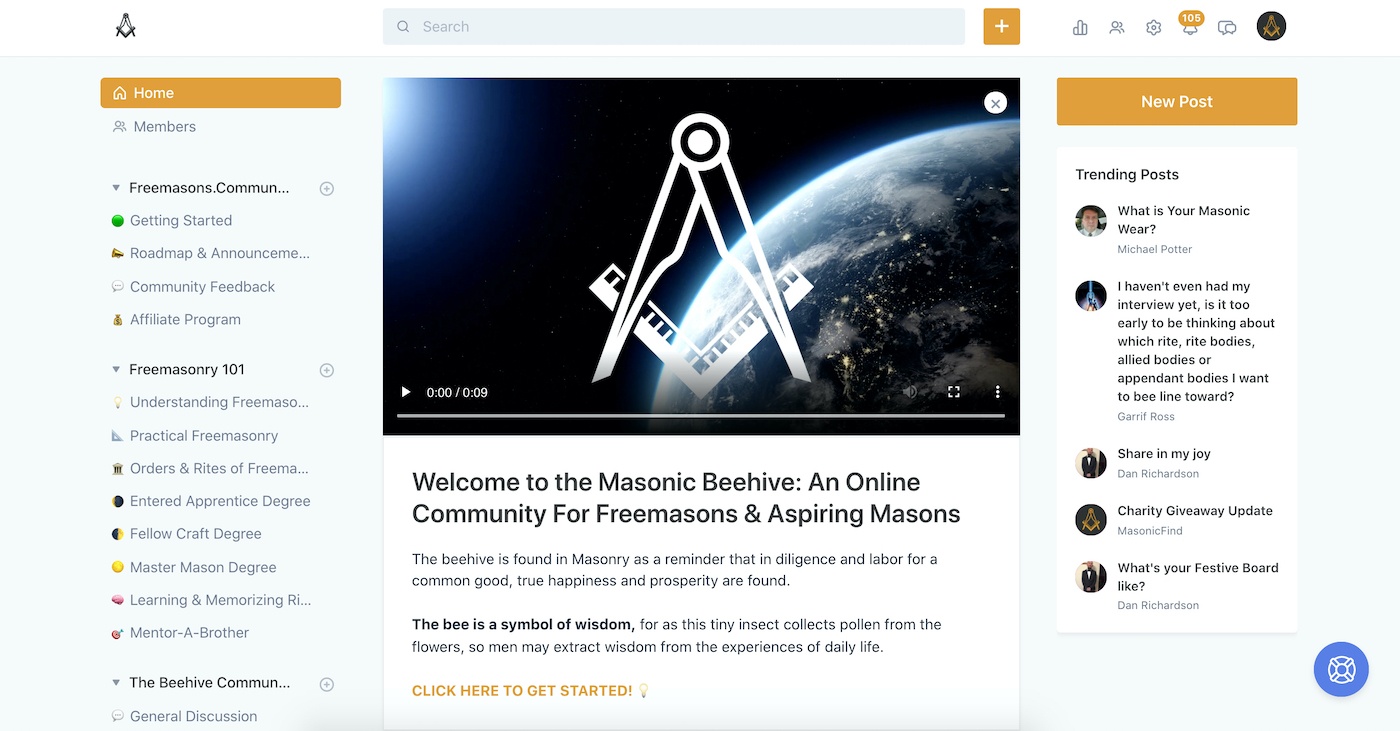
Source: https://masonicfind.com/masonic-symbols
Belum ada Komentar untuk "Free Black and White Viking Helmet Crossed Swords Clip Art"
Posting Komentar